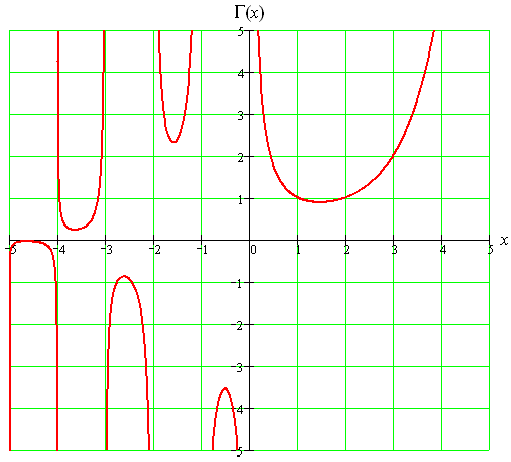The History and Concept of the Number 0
The goal of this FAQ is to clear up the concept of 0 and specifically the operations that are allowed with 0.
The best way to start this FAQ is to look at a bit of history
Table of Contents
A short history of 0
Historically, there are two different uses of zero: zero as a placeholder and zero as a number in its own right. Zero is used as a placeholder in numbers such as 1010. It merely indicates that the first one stands for a thousand and that the second 1 stands for ten. If we didn’t have a placeholder zero, then we couldn’t differentiate between 11 and 1010. So zero is just a symbol here, it doesn’t have any particular meaning. Zero as a number is a much more controversial topic. It asserts that zero is a number in its own right and has the same privileges as 1,2,3,4, etc. Nowadays, zero is a well-respected number, but that wasn’t always the case. It didn’t even always exist as a placeholder. For example, the Babylonians couldn’t differentiate between numbers such as 8 and 80. Nevertheless, people soon saw the difficulty and started using a placeholder anyway. Our concept of “zero” as both a placeholder and a number originated in India in the 9th century. But mathematicians were quite unsure about how to work with zero. For example, some rules involving zero were
A number when divided by 0 is a fraction with 0 in the denominator.
Zero divided by zero is zero.
As we shall soon see, these rules are not in practice today.
The Indian mathematical knowledge soon found its way to the Arabs. Specifically, al-Khwarizmi popularized the Hindu numeral. The Arab knowledge found its way into Europe by Fibonacci. By the 16th century, the Hindu numerals (including zero) were in use throughout Europe.
For more information about this fascinating topic, see: http://www.gap-system.org/~history/HistTopics/Zero.html
Is zero positive or negative?
By very definition, zero is defined to be neither. The positive numbers are defined as the numbers x such that x>0. The negative numbers are defined as the numbers x such that x<0. So 0 is neither positive nor negative. We also say that 0 has no sign. This is true by definition, so that might make it pretty arbitrary: that is, other definitions can be used but they are not standard.
Zero is also both nonnegative and nonpositive.
Operations with zero
Zero is known as the additive identity. That is: for every number x (that is: x can be natural, real, complex, etc.) we have that [itex]x+0=x=0+x[/itex].
From this, we can easily infer what 0x is (by using distributivity)
[tex]0x=(0+0)x=0x+0x~\Rightarrow~0x=0[/tex]
So 0 times anything is 0. (This in fact holds in every ring.)
The division is a bit more difficult. First, we must actually define what division is. We say that [itex]\frac{a}{b}=c[/itex] if and only if c is the unique number such that a=bc.
From this, we can infer that [itex]\frac{0}{x}=0[/itex] for each nonzero x. To show this, we need to prove that 0x=0 and that there is no other number c such that cx=0. The former is proven above. The latter is also true (for nonzero x), but it might not be obvious why. In fact, to prove this, we need to know what exactly multiplication is. This requires knowledge of the Peano axioms and so on. Therefore, we will leave this for another FAQ.
Division by 0
Now, what if 0 is the denominator? That is, what if we have [itex]\frac{x}{0}[/itex] or even [itex]\frac{0}{0}[/itex]?? In this case, we say that the division is undefined. Indeed, if x is nonzero, then there is no number c such that [itex]\frac{x}{0}=c[/itex]. That is, there is no c such that 0c=x. Indeed, we have shown that 0 times any number is 0. So 0c can never be a nonzero number x!!
This argument fails when x=0. In that case, there are numbers c such that 0c=0. The problem is that these numbers are not unique. In fact, all numbers satisfy 0c=0. So [itex]\frac{0}{0}[/itex] would equal every number!! This is undesirable, so we leave [itex]\frac{0}{0}[/itex] undefined.
Some say that [itex]\frac{x}{0}=\infty[/itex]. Let’s go deeper into this. First of all: [itex]\infty[/itex] is not a number. So saying that [itex]\frac{x}{0}=\infty[/itex] is not ok since we have not defined it as a number.
Of course, it is possible to extend our number system to include [itex]+\infty[/itex] and [itex]-\infty[/itex]. This is the context of the extended real numbers (see http://en.wikipedia.org/wiki/Extended_real_number_line). But even then, defining division by 0 is undesirable. But let’s first look at why people even consider defining [itex]\frac{x}{0}=\infty[/itex]. Well, let’s have a look at the graph of [itex]\frac{1}{x}[/itex].
We see that the graph of [itex]1/x[/itex] becomes very big (or small) if x is close to 0. So it would make sense to say that [itex]\frac{1}{0}[/itex] is the biggest number available, and that would be infinity (in the extended reals). The problem with this is obvious: if x is close to 0 and negative, then [itex]\frac{1}{x}[/itex] becomes very small. So if we approach from the left side, then the correct value for [itex]\frac{1}{0}[/itex] is [itex]-\infty[/itex]. And if we approach from the right side, then we see that [itex]\frac{1}{0}=+\infty[/itex]. So we cannot know whether [itex]\frac{1}{0}[/itex] is positive or negative infinity, and this is why we leave [itex]\frac{1}{0}[/itex] undefined.
But what if we would have a strange number system where [itex]+\infty=-\infty[/itex]?? Well, that number system exists and it is called the projective real numbers (http://en.wikipedia.org/wiki/Real_projective_line ). In that case, there is only one infinity. This is denoted by [itex]\infty[/itex] (without sign). In this context, we do define [itex]\frac{x}{0}=\infty[/itex]. But [itex]\frac{0}{0}[/itex] remains undefined (for reasons stated above: there is no unique number c such that 0c=0).
Exponentiation and 0
Exponentiation and 0 is another messy topic. Recall that if n is a nonzero natural number, then we define [itex]a^n=a*a*a*…*a[/itex] where we multiply a with itself n times. But how should we give sense to [itex]a^0[/itex]??
Well, to formulate a sensible definition, we first need to know something more about exponentiation. That is, we should know about the formula [itex]a^{n+m}=a^na^m[/itex]. This formula holds for all nonzero naturals n and m. We would like it to hold for n=0 as well. This will get us
[tex]a^m=a^{0+m}=a^0a^m[/tex]
So we see that [itex]a^0[/itex] would be a number such that [itex]ba^0=b=a^0b[/itex]. So, [itex]a^0[/itex] would have to be the multiplicative identity. That is: [itex]a^0=1[/itex]. This is indeed the definition of exponentiation by 0. But we only define this for nonzero a.
What is the problem with [itex]0^0[/itex]?? Well, defining [itex]0^0=1[/itex] would be logical (considering the previous discussion), but it leaves us with an annoying situation. Indeed: the function [itex]f(x)=0^x[/itex] would be zero everywhere except in 0 (where f(0)=1). This is undesirable. Furthermore, the function [itex]f(x,y)=x^y[/itex] would have an essential singularity in (0,0). That is: this indicates that [itex]0^0[/itex] could be anything. This is why we often leave [itex]0^0[/itex] undefined.
However, there are many mathematicians who disagree with this and do define [itex]0^0=1[/itex]. This is a handy convention because it doesn’t restrict important theorems. For example, the binomial theorem states that
[tex](x+y)^n=\sum_{k=0}^n{\binom{n}{k}x^ky^{n-k}}[/tex]
But if x=0 and n=0, then this sum becomes undefined because we have to evaluate [itex]0^0[/itex]. Setting [itex]0^0=1[/itex] solves this and allows us to state the binomial theorem in full generality!
Factorials and 0
We have seen that it’s not possible to define [itex]0^0[/itex] in a very satisfying way: there are always problems which each definition. This is not true with the factorial. We can define 0! in a very satisfying way that works all the time. Let’s look at some points of view:
Firstly, the factorial can be defined recursively as
[tex]1!=1~\text{and}~(n+1)!=(n+1)*n![/tex]
So, a priori, we cannot know what 0! is. But what if we apply the recursive equation on n=0, then we get
[tex]1!=1*0![/tex]
So, we see that defining 0!=1 would make sense.
Of course, the factorial has a very practical meaning. Indeed, n! is the number of ways we can order n objects. For example, there are 3!=6 possible ways to order 3 elements. Indeed, we can order {a,b,c} as
[tex](a,b,c),~(a,c,b),~(b,a,c),~(b,c,a),~(c,a,b),~(c,b,a)[/tex].
There are 2!=2 ways to order 2 elements. Indeed, we can order [itex]\{a,b\}[/itex] as
[tex](a,b),~(b,a)[/tex]
There is 1!=1 way to order 1 element. Indeed, we can order [itex]\{a\}[/itex] as
[tex](a)[/tex]
And finally, there is 0!=1 way to order 0 elements. Indeed, we can order [itex]\emptyset[/itex] as
[tex]\emptyset[/tex]
The factorial n! also gives the number of bijections [itex]f:\{1,…,n\}\rightarrow \{1,…,n\}[/itex]. Here we can say that there is only 1 bijection [itex]f:\emptyset\rightarrow \emptyset[/itex]. Indeed, this bijection is the empty function.
Another way to use factorials is when looking at binomial coefficients. We define
[tex]\binom{n}{k}=\frac{n!}{k! (n-k)!}[/tex]
This gives us the number of ways to choose k elements from n element, where order doesn’t matter. For example
[tex]\binom{4}{2}=6[/tex]
is the number of ways to choose 2 elements from a set of 4 elements. Indeed, from the set [itex]\{a,b,c,d\}[/itex], we can choose the subsets
[tex]\{a,b\},~\{a,c\},~\{a,d\},~\{b,c\},~\{b,d\},~\{c,d\}[/tex]
What happens in our formula if k=n?? Then we should get the number of ways to choose n elements from a set of n elements. There should only be one way of doing it. Thus [itex]\binom{n}{n}[/itex] should hold. And if 0!=1, then it does hold:
[tex]\binom{n}{n}=\frac{n!}{n!0!}=1[/tex]
What if k=0?? Then we should get the number of ways to choose 0 elements from n elements. There should also be 1 way of doing this: selecting no element. And indeed:
[tex]\binom{n}{0}=\frac{n!}{0!n!}[/tex]
Also, our binomial theorem only works if we define 0!=1.
Lastly, the final result is given by the Gamma function. The Gamma function is a continuous function that is defined as
[tex]\Gamma(z)=\int_0^{+\infty}{t^{z-1}e^{-t}dt}[/tex]
This looks strange, but the Gamma function has the property that
[tex]\Gamma(n)=(n-1)![/tex]
So the Gamma function can be seen as a continuous continuation of the factorial. Now, we have
[tex]0!=\Gamma(1)=1[/tex]
as can be easily calculated or which can be seen on this graph:
All this evidence points to the inevitable conclusion that we have to define 0!=1. There is absolutely no problem with this definition, as opposed to defining [itex]0^0[/itex].
The following forum members have contributed to this FAQ:
Borek
D H
HallsOfIvy
Hootenanny
Mark44
micromass
tiny-tim
Advanced education and experience with mathematics









Good article!
[QUOTE=”Shyan, post: 5211116, member: 160907″]Just a historical correction. Khwarizmi was actually Iranian.[/QUOTE]
Actually, micromass never said he was other, and as a Muslim, it would have been through the Arabs and with Arabs that the information came.
Just a historical correction. Khwarizmi was actually Iranian.
Micromass, you omit to mention that the Mayas also created or came up with the number Zero. :D Good analysis.
Nice article !
Thanks, Micromass.
Nice article, Micro! Thanks for sharing!